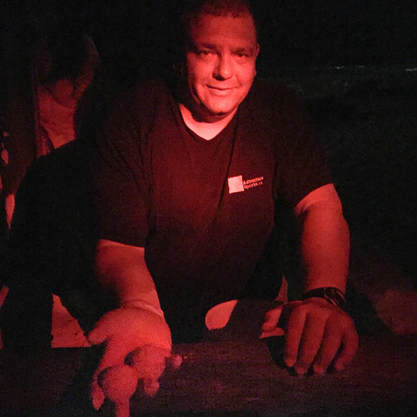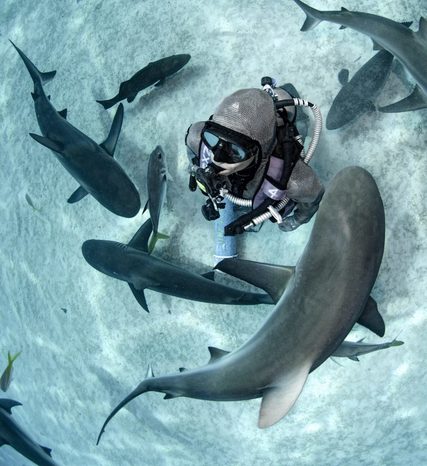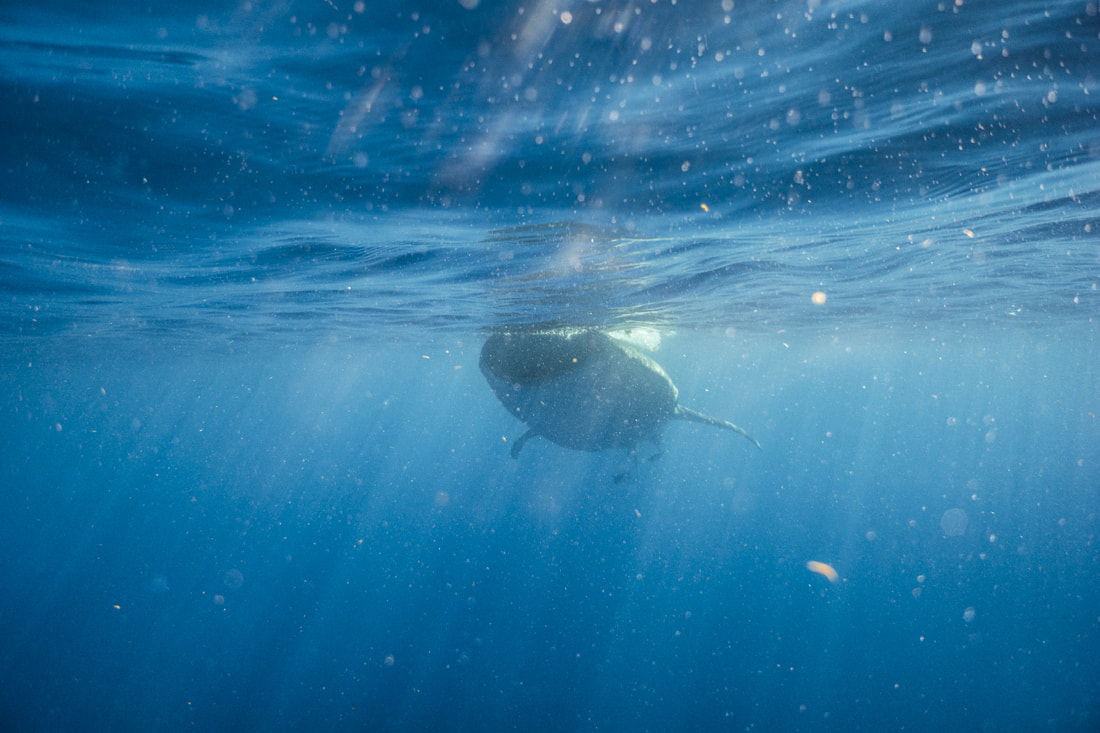|
By Jill Smith  Sea Turtle nursery - Each nest is labelled Sea Turtle nursery - Each nest is labelled While we were in Cancun this July for our annual whale shark swim, we experienced something new, wonderful, and unexpected! We did not realize that the eastern facing beach in Cancun where our resort (the Golden Parnassus) was located, had a sea turtle conservation program working in full swing due to the high volume of mama tortugas (turtles) coming onto the beach at night to lay their precious eggs. Nearly all species of sea turtles are labelled as endangered; without the help of the resorts who gladly participate in sea turtle conservation program (the Mexican people love their ocean, and are so happy to help their marine wildlife), these nests might otherwise be destroyed. While unintentional, tourist life on the beach is a hazard to the survival of these nests (think about beach volleyball, tractors raking and grooming the beaches every day, etc), not to mention the natural hazards of land and sea-bird predators. We did wake up one morning to find that a sea turtle had nested in the middle of the volleyball court during the night, leaving a fairly deep 3 foot in diametre hole. Adorable!  We got to watch this nest hatch We got to watch this nest hatch Many resorts along this strip, including our own, had fenced nurseries, where they re-bury the eggs after mama has laid them. They are protected from foot traffic and predators, and each nest is labelled with the date the eggs were laid, the species of turtle, and number of eggs. We saw nests posted of eggs from Caguama tortugas (loggerhead), Blanca (white sea-turtle), and Chelonia mydas (green sea-turtle). It’s wonderful to see this effort on the turtles’ behalf. Jody and I had lots of questions for the lifeguard, who participates in the program. He was very patient to answer them all, and actually, I think they are just as interested and happy to share. A little later, he approached me, and asked, “Would you like to see a nest of white baby sea-turtles hatching?” “Ummmmmm let me think… DOES A WHALE SHIT IN THE OCEAN??? HELL YES!!!” He advised us to meet him by the nursery in 20 minutes. I wasn’t letting him out of my sight though, so I stalked him back to the nesting area. We were SOOOOOOO excited, I can’t even tell you! WOW! OH BOY OH BOY OH BOY! Reading the plaque, I could see that the eggs were laid on June 1st. It was now July 21st - 50 days have passed. The lifeguard starts digging down, very gently, and soon, we catch the first glimpse of a turtle fin! I asked why they don’t allow them to dig out on their own when they are ready, but he says, they want to collect them, keep them safe, and release them when the pelicans and sea-birds aren’t a threat (just after dark). And soon the hole is erupting with all of these wiggly, beautiful, perfect little sea-turtles! Even the markings on their faces are already there. Collected in a sandy basket, we had to wait a couple of hours for the sun to go down, and then we took them to the ocean to let them go. Part of me didn’t want to release them, because I know most of them are facing certain death out there (maybe only 10% will survive), but that is the nature of things… Hopefully they have been given their best chance! But that’s not all. After dinner, around 10:30, Jody and I go for a walk on the beach, and don’t we come across a mama loggerhead sea-turtle making her way up the beach to find a place to lay her eggs. Seriously, how amazingly crazy is that? I thought my head would pop off from the shear excitement of it all. We stayed well back, and sat on a beach chair to observe quietly from a distance. The conservation guy (Fernando) was also there, standing back to observe, so we got to whisper our questions to him. We couldn’t take pictures, because flashes and lights will scare a mama back into the ocean before she has laid her eggs, so we could only squint and watch in the dark.  Jody holds two delicate turtle eggs in his gloved hand Jody holds two delicate turtle eggs in his gloved hand It took her a little while to decide where she wanted to nest, but she finally decided that under the lifeguard station was a good spot. Her powerful front fins can really throw sand! We saw sand flying several feet into the air as she dug a bed for herself. Soon, she was so deep in the hole that she was just below the sand surface. That is when she starts scooping out a hole with her back fins. Fernando says that her back fins can scoop much like our hands can (cupped). After the sand was no longer flying, and she was still and quiet, he said, “Come with me, we are going to check her now. Quietly.” OHMYGOSH!!! He and his colleague used red lights to see, as this is the least disturbing to mama turtle. Fernando handed Jody a pair of gloves to wear to help collect the eggs, while I took pictures the best I could in the darkness. I got to stroke her shell; Oh my gosh I love her. A mama sea-turtle can lay 50-200 eggs at a time, though we were carefully collecting them and placing them in a bucket for re-burying, and did not count them at that time. Presumably they are counted as they are placed in the new nest. We thanked Fernando and started walking back to our resort, and we came across several large holes in the sand, and there was even another mama turtle in one of them! Jody ran back to tell Fernando, and he came with a flag to mark the spot so they could retrieve them later. There were still more sea turtles coming up onto the beach to lay…so many! What an experience! Best day ever! Bravo to the Mexican Conservation Authority and the Resorts that are invested in this program! Let's hope that the efforts made today make the sea turtle populations and oceans healthier tomorrow.
0 Comments
By Jill Smith  Rhincodon Typus (Whale Shark) Fresh from our Whale Shark trip... and it was awesome! Although these beautiful beasts may be found in tropical waters all over the world, they are not commonly experienced by divers and snorkelers. That makes our encounter with them extra special! Luckily for us, hundreds of these gentle giants congregate to feed around the Yucatan Peninsula and the Gulf of Mexico from June to August, so planning our encounters has been relatively easy. We have a good relationship with Solo Buceo Dive Shop* in Cancun, which helps to make it an amazing adventure! Whale sharks are filter feeders, and although they are the largest fish in the ocean, they feed on the tiniest creatures, barely visible to the human eye; they can grow up to 40 feet in length, so naturally, they have to eat almost continuously! These animals can live to be over 100 years old (if they are not hunted by humans). Females are larger than males. The more you learn about these fish, the more fascinating they are! Whale Shark Photography Traditional underwater photography rules still apply, such as holding the camera as steady as possible. If you are snorkeling, try holding your breath as you squeeze the shutter release, and of course, try to keep your shutter speed fast enough to freeze the action. The shark is moving, the water is moving, you are moving. If possible I want my shutter speed set to 1/125 or faster. Light In Mexico, you are permitted only to snorkel with whale sharks, and whale sharks glide across the top of the water, so your experience with them is shallow. And you know what shallow water means… more natural light! Strobes need not apply! Lens Whale sharks are enormous; they can be as big as a school bus, and that means you need to consider your lens. A wide angle lens and/or a dome port will help a great deal in terms of fitting these overgrown puppies into your frame. A wide angle lens and a dome port offer a couple of advantages:
Lining up the shot Never try to out-swim a whale shark. They appear to be swimming slowly, but their fins are bigger than yours; you will exhaust yourself trying to keep up, and you won’t be able to hold the camera steady at the same time anyway. Try to anticipate the trajectory of the whale shark swimming in the water and intercept its path, or wait for a swim-by. You can see in the photo below, that Trena has floated patiently in the line of the shark’s path, and the shark came straight towards her – right in the mouth! What a great experience! Husband Rick watches in awe. We all found it to be an awesome experience! Composition If it is possible, shooting up at the animal often results in a more dramatic and pleasing shot. A little freediving practice won’t hurt! Photography and Protecting these Darlings Did you know that whale sharks are listed as “endangered” on the International Union for Conservation of Nature’s (IUCN) Red List of Threatened Species? Your photography can actually contribute to the global effort to protect and learn about amazing whale sharks! Link to Red List of Threatened Species: http://www.iucnredlist.org/details/19488/0 How Can Your Photography Help? The patterns and scarring on whale sharks are as distinctive as a fingerprint, allowing scientists to identify individuals for long-term, mark-recapture analysis. If population models can be created to give conservation management authorities a better understanding of the habits and stressors on these animals, then well-informed plans may be developed to take action for their preservation. How do I Take Photos for Wildbook and Whale Shark Conservation?
Submit Whale Shark Identifying Photos to: http://www.whaleshark.org/submit.jsp Thank you for contributing to this global effort to protect the whale sharks! * Solo Buceo Dive Shop (Cancun)– Have diving needs in the Cancun area? Visit Solo Buceo, and tell them Adventure Sports Newmarket (Jody) sent you! You won’t be sorry; their service and dive expertise will make you a very happy diver! Want us to make your diving arrangements for you? No problem! 905-898-5338 OMG, is this really happening? By Jill Smith Shark week is coming July 23 -30, but before you tune in to the Discovery Channel, I would like to remind you to take their films with a grain of salt; scary sharks and dangerous situations are sexy, and they sell, but it isn't exactly realistic or even fair. Sharks deserve better. SO important to the health of our oceans and reefs, we need to protect them, not kill them. We should be far more afraid getting into our cars, than diving on a reef; seriously, I should hire a narrator to narrate my drive to the airport; his deep voice, ominous tone, and story-telling ability will have you on pins and needles waiting to find out if I survive the commute: "Jill knows that one wrong move at this point could mean certain death in a fiery crash..." LOL I'm Signed up for Shark Handling, Baby! So, in the name of Shark Education, and Shark Conservation, I am super excited to be heading to the Grand Bahamas the second week of August to take the Shark Handling course with Cristina Zenato! WHAT?! OMG, YES!!! This is an experience I have been dreaming of for some time now, and I think I might burst from excitement! I will be spending my mornings learning about shark behaviour, shark biology, and shark conservation, and in the afternoon, I will be rocking a chain mail suit over my 3 mil, and interacting with sharks under Cristina's direct supervision. WOW! WOW! WOW!  Shark Dive on the AquaCat in the Bahamas - Photo by Brianna Shark Dive on the AquaCat in the Bahamas - Photo by Brianna I used to be TERRIFIED of sharks! Until Jody bought the dive shop, and I started diving with him more frequently in the Caribbean, I was terrified of sharks. Even on our honeymoon, when we went snorkelling to see the turtles, I panicked halfway out and made him turn back ("GO BACK! GO BACK! WE'RE GONNA DIE!"), because I kept imagining a big shark coming at us with jaws open, out of the blue gloom. Sadly, we never got to see the sea turtles on that trip. I obviously watch too much TV. Then, I remember when we booked our first AquaCat Scuba cruise, how I fretted about their coveted "shark dive". I'm telling you, I had dreams of my bedroom filling up with blue, glowing water, and becoming infested with sharks (good grief, I hardly got any sleep). I was very anxious about that dive; when the time came, I refused to get into the water until Jody got in first. Then I watched and waited for a minute. Nope, he did not get dragged under by a hungry shark. So with a hope and a prayer, I jumped in with him, and held his arm tightly as we slowly descended. At some 40 feet of depth, Jody tapped my arm and I looked to see what he was pointing at. There she was - a Caribbean Reef Shark, swimming by, minding her own business. She was calm. She was big and beautiful. And she couldn't care less that I was there. She took my breath away. I was in LOVE; hook, line, and sinker. BEST. DIVE. EVER. Fun Fact: In 2000, Peter Bencheley, the author of Jaws, said that he would never have written the book if he had known the damage it would do to the reputation of the great white shark. Peter has since been an advocate for sharks, trying to help people appreciate their beauty and how necessary they are to the health of our oceans. He said that because of their fearsome reputation "no one appreciates how vulnerable they are to destruction". Who is Cristina Zenato?  Cristina Zenato at home with her babies. Cristina Zenato at home with her babies. Let me introduce you to Cristina Zenato; she is an incredibly accomplished scuba diver, and I have admired her for a long time, not only for her numerous accomplishments, but for her positive approach to life. She is the first woman to connect an inland fresh water cave to a salt-water ocean system, she was inducted into the Women's Dive Hall of Fame in 2011, and she has been studying and participating in shark research across the globe for years. Beyond even that, she has developed her practice of inducing a relaxed state in sharks, enabling her to safely remove fish hooks and parasites from the animals. You would think that the sharks would avoid contact with her, but to the contrary, they appear to seek her touch. Among other things, Cristina instructs the Shark Specialty course, the Shark Handling Experience, and the Shark Handling Course. Why? Simply for love. Motivated by the love of sharks, and love of the ocean, she has dedicated her life's work to protecting and honouring both. Cristina initiated a campaign that resulted in the complete protection of all species of sharks in the entire Bahamas, and her objective is to help people appreciate how beautiful, precious, and important sharks are to our world oceans. What an amazing lady - I can't wait to meet her! What's it going to be like diving with Cristina and her babies? Dunno! I will let you know! Certainly for myself (and, of course, for anyone who is interested in knowing more), I will be documenting my experience through blog and journals. I will not be taking my camera on this trip, as I will be directing my full attention to Cristina and the sharks. Cristina's videographer will be documenting my shark handling dives for me, however, so I hope to have a visual keepsake of this exciting journey! If you would like to learn more about Cristina Zenato, see her videos, and photos, visit: www.cristinazenato.com <3 |
FlickrAlbumAuthorsJill Smith Archives
January 2024
Categories
All
|
Our Services |
Company |
SupportOur Blog
|
|
Copyright © 2014
|
Newmarket, ON
|
(905) 898 5338
|














 RSS Feed
RSS Feed

